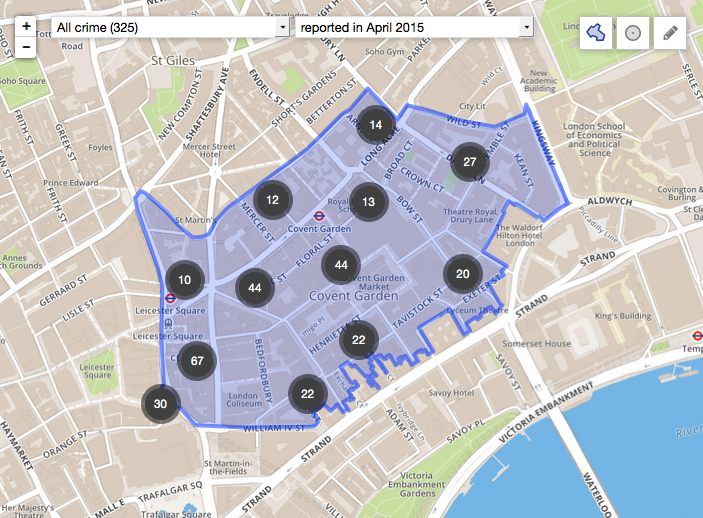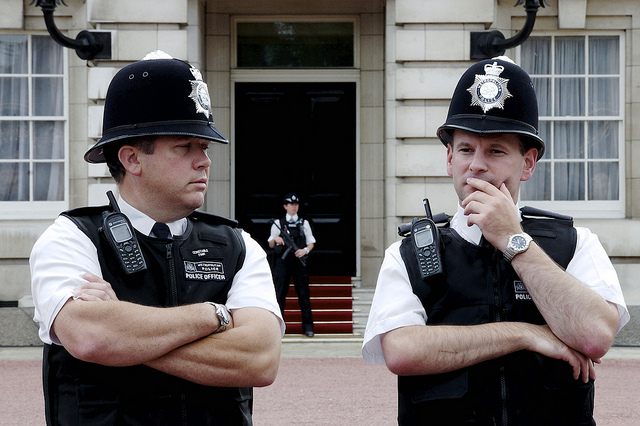UK Crime Data: Feeling is Believing
Latest crime data shows that the UK is getting significantly more ‘peaceful’. Last month, the Institute for Economics and Peace published the UK Peace Index, revealing UK crime figures have fallen the most of all EU countries in the past decade. Homicide rates, to take one indicator, have halved over the last decade.
Crime Scene by Alan Cleaver, Flickr, CC-BY
But the British public still feels that crime levels are rising. How can opening up crime data play a part in convincing us we are less likely to experience crime than ever before?
The ‘Perception Gap’
The discrepancy between crime data and perceptions of the likelihood of crime is particularly marked in the UK. Although it has been found that a majority of the public broadly trust official statistics, the figures are markedly lower for those relating to crime. In one study, 85% of people agreed that the Census accurately reflects changes in the UK, but only 63% said the same of crime statistics.
Credibility of Police Data
Police forces have been publishing crime statistics in the UK since 2008, using their own web-based crime mapping tools or via the national crime mapping facility (http://maps.police.uk/ and http://www.police.uk). This has been purportedly for the purpose of improving engagement with local communities alongside other policy objectives, such as promoting transparency. But allegations of ‘figure fiddling’ on the part of the police have undermined the data’s credibility and in 2014, the UK Statistics Authority withdrew its gold-standard status from police figures, pointing to ‘accumulating evidence’ of unreliability.
The UK’s open data site for crime figures allows users to download street-level crime and outcome data in CSV format and explore the API containing detailed crime data and information about individual police forces and neighbourhood teams. It also provides Custom CSV download and JSON API helper interfaces so you can more easily access subsets of the data.
But the credibility of the data has been called into question. Just recently, data relating to stop-search incidents for children aged under-12 was proved ‘inaccurate’. The site itself details many issues which call the accuracy of the data into question: inconsistent geocoding policies in police forces; “Six police forces we suspect may be double-reporting certain types of incidents“; ‘siloed systems’ within police records; and differing IT systems from regional force to force.
In summary, we cannot be sure the ‘data provided is fully accurate or consistent.’
The Role the Media Plays: If it Bleeds, it Leads
In response to persistent and widespread public disbelief, the policies of successive UK governments on crime have toughened: much tougher sentencing, more people in prison, more police on the streets. When the British public were asked why they think there is more crime now than in the past, more than half (57%) stated that it was because of what they see on television and almost half (48%) said it was because of what they read in newspapers [Ipsos MORI poll on Closing the Gaps. One tabloid newspaper, exclaimed just recently: “Rape still at record levels and violent crime rises” and “Crime shows biggest rise for a decade“. As the adage goes, If it Bleeds, it Leads.
Crime Data and Mistrust of the Police
Those engaged in making crime figures meaningful to the public face unique challenges. When Stephen Lawrence was murdered in 1993, and the following public inquiry found institutional racism to be at the heart of the Met police, public trust towards the police was shattered. Since then, the police have claimed to have rid their ranks of racism entirely.
Police by Luis Jou García, Flickr, CC BY-NC 2.0
But many remain less than convinced. According to official statistics, in 1999-2000, a black person was five times more likely than a white person to be stopped by police. A decade later, they were seven times more likely. One criminologist commented: “Claims that the Lawrence inquiry’s finding of institutional racism no longer apply have a hollow ring when we look at the evidence on police stops.” [Michael Shiner reported in the Guardian].
Equally, the police distrust the public too. The murder of two young, female police officers in Manchester in 2012 ignited the long-rumbling debate over whether the police should be armed. So the divide between the police and the public is a serious one.
A Different Tack?
In 2011, a review was undertaken by the UK Statistics Authority into Crime Data. Its recommendations included:
- Improving the presentation of crime statistics to make them more authoritative
- Reviewing the availability of local crime and criminal justice data on government websites to identify opportunities for consolidation
- Sharing of best practice and improvements in metadata and providing reassurance on the quality of police crime records.
It’s clear that the UK police recognise the importance of improving their publication of data. But it seems that opening data alone won’t fix the shattered trust between the public and the police, even if the proof that Britons are safer than ever before is there in transparent, easily navigable data. We need to go further back in the chain of provenance, scrutinise the reporting methods of the police for instance.
But this is about forgiveness too, and the British public might just not be ready for that yet.


